Ever designed for adult with ADHD?
Have you ever been asked to design or actually decorated for an adult, single male with ADHD? I have some thoughts about this project, but I'd rather hear from others first. This is a blank slate, builder grade condo that is about 1200 square feet, with an open kitchen, dining area, and living area. It "lives" larger than it is. The over-the-entry stairs have a 20' ceiling, but most of the ceilings are 8'. Does this question make sense? Or is it too unspecific? Are there referential guidelines anywhere?
Comments (39)
palimpsest
11 years agoSome of it is going to depend on what his specific issues are. Like will he need really specific rooms or areas for specific activities?
cloudy_christine
11 years agoThere's a book I think will help you get some ideas. It's Organizing Solutions for People With Attention Deficit Disorder. I read it because I am clutter-prone, but it really didn't apply. (For instance she says ADHD people are not attached to their stuff -- so not me.)
It will give you lots of ideas to discuss with the client.
One of the main things is open storage. From her experience the author says ADHD people need to see where to put things. It would be wonderful to design with that in mind instead of having to use after-market shelving, etc.
Another key idea, obviously needing discussion with the client, is having much less stuff to design places for. But it's not just much less stuff, it's fewer kinds of things in a category. For instance, some of the reviews said it their lives became so much easier hen they threw out all their socks except for a dozen identical black pairs and a dozen identical white pairs. For me that's hard to understand, but gives you an insight into a different way of seeing things.
You have an interesting challenge. And a rare opportunity to improve someone's life a lot through good design!Here is a link that might be useful: Organizing Solutions for People With Attention Deficit Disorder
Related Professionals
Clinton Township Interior Designers & Decorators · Lomita Interior Designers & Decorators · Cartersville Furniture & Accessories · Cedar Rapids Furniture & Accessories · Charleston Furniture & Accessories · Franklin Furniture & Accessories · Greenville Furniture & Accessories · Minneapolis Furniture & Accessories · Aliso Viejo Furniture & Accessories · Greenwood Village Furniture & Accessories · Robbinsdale Furniture & Accessories · Palmetto Bay Furniture & Accessories · Arlington Custom Artists · Hudson Custom Artists · Richmond Custom Artistsbronwynsmom
11 years agoI did get on my soapbox a bit about this - someone whom I love very deeply and dearly has the mixed blessing and challenge of ADD, and managing it in every possible way frees her to express all the wonderful, adorable qualities that also come with this particular kind of brain.
The quirkiness, the flights of imagination, the hilarity, the quick creative intelligence, and the deep empathy. I believe that these folks are touched a bit by the divine. So don't ask me to be unbiased!
beeps
11 years agoAs suggested, I'd ask the guy what specific difficulties his ADHD causes and try to design around/plan around those.
I didn't notice the soapbox bronwynsmom - I noticed how you nailed it. An uncluttered, structured, organized environment is key. One additional visual cue that can be helpful, in addition to easily referenced clocks and timers, is an easy to see calendar to keep track of things to do/places to be. I know people use their phones for this, but depending upon the person with ADHD (who, as bronwynsmom pointed out are as different as people without ADHD) they often need a visual reminder rather than having to check their phone to see what is on the schedule... because they may neglect/forget to do so. A work center type of area might be helpful to drop keys, charge phone, put the mail, check the calendar, etc.
The only other thought I have is the "open floorplan" may be distracting and partitioning the space some may be helpful. That way when in the kitchen the individual won't be distracted by things in the living room, for example. But, I'd hate to chop up 1200 sq ft too much.
lazy_gardens
11 years agoWith the storage ... some ADHD persons find open storage distracting, others find it essential. You'll have to ask.
Going for the "corral the chaos" method, using bins on shelves, might work.
A place for projects to stay out as a reminder to finish them can be a good thing. I'm of the "put of sight, doesn't exist" sort, and if someone tidies up after me it may take months for me to realize that "X" never got finished.
Definitely have bulletin board, whiteboard and other reminders that don't rely on the person remembering to check the to-do list in their iPhone.
kitchendetective
Original Author11 years agoOh, my. These replies are tremendously helpful. I'm generating a preliminary questionnaire. Any and all thoughts and experiences re: this topic welcome.
Ilene Perl
11 years agoI asked my daughter, she's an occupational therapist. Her thoughts are calm colors, organized closet/drawers. A coat rack, so there's a place to put outer clothing as soon as clinet enters ? shoe rack is also a good idea she thought.
lynninnewmexico
11 years agoOne of my brothers and two of my nephews have ADHD and I think Bronwynsmom nailed it totally, as well as clearly and with the reasoning behind it.
mahatmacat1
11 years agobronwynsmom, you've posted a classic. I'm keeping this and I've already shared it with my daughter -- both she and I are ADD folks...she was nodding and saying "yes, yes" to each line.
Now if I could only get her to move from knowing she's got this situation to taking steps to help herself...anyone have any tips on this? She won't let me help her organize her room, and she won't do it herself. She's stuck in neutral, as it were. SO frustrating to watch...any thoughts?
outsideplaying_gw
11 years agoBronwynsmom, you hit things dead-on. My DD is ADD and at age 38 she finally found a career that suits her and is doing phenomenally well at it. The only thing I can add to it is 'analysis paralysis' seems to go along with a lot of her decorating decisions and therefore not a lot gets done without a great deal of prodding and gentle help from others. Love her dearly for many of the same reasons you so eloquently state.
bronwynsmom
11 years agoOh, yes, "analysis paralysis" is a big block, and a wonderful expression for it.
My belief is that it comes from another of ADD's challenges, which is ease at seeing all the parts of any project quite clearly, and extreme difficulty in setting priorities and going down the list one by one.Since you can't do everything all at once, it's hard to do anything, because the things you AREN"T doing just won't shut up. It makes you anxious because you have the distinct feeling that you should be doing something else.
bronwynsmom
11 years agoKitchendetective, to get back to your more practical questions, in a condo like the one you describe, I think that the first order of business would be to discuss and try to design as many walls of purpose-built storage as you possibly can.
In planning the storage, I'd establish that things live where they are used - sheets in the bedroom, towels in the bathroom if possible (and in the adjacent bedroom if not) dishtowels near the sink, cups and other coffee and tea things near the coffee maker, keys near the door, ink cartridges near the printer, etcetera. The exception is things that are used only now that then, and in different places. For those, everything that is alike goes together, like batteries, extension cords, and light bulbs.
Next, I'd settle on a firm color scheme, and restrict any pattern to things that are not too busy, and only one or two. Texture is a good substitute for pattern, and helps avoid blandness.
After that, a plan based on circulation. It should be easy to move around normally everywhere, and to use all the space without feeling cramped or trapped.
Then, I'd make a rule that all the furniture has to do something that is based on the life that is actually being lived there - to serve as storage, or divide a space, for instance - and that nothing has to be moved around to be used. No unnecessary extra steps for anything.
The black and white socks plan is brilliant. Reducing the number of decisions to be made among lots of choices is so helpful.
I always recommend that distractable people use only white bed and bath and kitchen linens, for instance. I do that in my own house, because it makes things so easy. When I find myself wanting to spring for patterned sheets or colored towels, I pour myself a little good bourbon and wait till the feeling passes...marcolo
11 years agoBrother label maker is your friend.
First, I'll say right off that asking about specific issues is very important. My feeling is that a lot of different things get lumped into "ADHD," and there are also varying levels of it. You might also get more accurate information not by asking only, "What do you have trouble with?" but also, "What do other people say you have trouble with?" In my experience, ADD/ADHD folks can drive their families to the point of insanity but never connect their reactions to their own behavior. They see that people get frustrated but genuinely cannot see what they did to provoke it. "Why are you always criticizing me? Why are you always pestering me?" So it's a delicate balance not to make your client again feel picked on, but it still is helpful to find out what other people have observed. Be diplomatic but curious.
If the kitchen needs to be kept clean, because it's an open space, you face an extra challenge. In my experience, an ADD/ADHD person tends to answer the question, "Where does this go?" with "Wherever it is" or "Wherever it fits." Putting the same thing back twice in the same place is not necessarily going to happen. In this case it might be helpful to have inflexible storage. A drawer organizer with slots that fit only spoons, only forks, only knives. Dishes in drawers with pegs that don't allow any other shape to be put in them. On Kitchens, I think beaglesdoitbetter posted a gadget drawer where each space fits only one specific utensil, such as a vegetable peeler or melon baller or whatnot. The empty hole tells you something is missing and what it is.
dretutz
11 years agoThis ADHD concurs with calm colors. BM cotswald with BM Wish, BM metroolitan work as a great scheme. In addition, I need multiple places for things like "earrings." If I come in, I need one bowl in the kitchen and one in the hall because the earrings will be shed before I ever go upstairs--therefore, I know to look in those two bowls. A table for keys, purse, etc. are crucial. I am of the less clutter with drawers for unfinished bills, mail and projects.
Good luckbronwynsmom
11 years agoMarcolo, you are exactly right about asking family members. ADD/ADHD people are notoriously poor self-observers.
And finding that balance between cooperating with the tendencies and trying to override and correct them is very tricky. So while inflexible storage is good for some people (or some things), having an oversized messy junk drawer can also work. Nailing things down too tightly can exacerbate that jumpy "lemme outta here!" thing.
It's important to remember that nearly everyone with ADD has lived a life of unrelenting criticism, accusations of laziness, repeated failures and frustrations, and refrains of "Dolly is not working up to potential."
Any well-meaning plan that attempts to help by forcing him/her into "normalcy," instead of finding a way to engineer a successful life in cooperation with the traits will end in tears.
daisychain01
11 years agoAs a kindergarten teacher, I was going to chime in here, but I've found that in reading the advice by posters above, I've learned a lot and will use some of the advice given above when I go in to my classroom next week to start setting things up for fall.
I do think it would be beneficial to do some reading on how teachers set up classrooms for kids with ADHD. Somethings that help there, could be useful for you. For example, not using flourescent lights and having lights that you can dim.
daisychain01
11 years agoAnother thing I meant to add is having standing height desks and eating areas with chairs that can be used or not.
But as others have mentioned above, consultation is key. What works with one person may not work with another. And what I've found in the classroom when it comes to ADHD kids, is something that is useful one day, might be useless the next.
Good luck with your project.
bronwynsmom
11 years agoDaisychain, can you point us to some resources for reading about classrooms? Teachers are probably more familiar with the day to day reality for children than anyone else.
awm03
11 years agobronwynsmom, your words have moved me to tears. Thank you for being so insightful & compassionate.
kitchendetective
Original Author11 years agoI generated a preliminary questionnaire, turning many of your observations (as of Sunday night) into statements, then adding some, and emailing my "client." (I'm doing this gratis as I'm not a pro, but have helped a few friends.) He affirmed all, except that he expressed a dislike of calm, pale colors, which very much surprised me. He said high contrast and bright accent walls helped him to focus. One of the questions was, "If there is a cubby that exactly fits my sunglasses, I am more likely to a) place them in that cubby; or b) set them on the kitchen island. His answer was "a." So, I thought I had a key to whether open, closed, or fitted storage was best. However, he did not like the idea of "dictatorial" storage spots in the kitchen. Like Marcolo, I had predicted that a storage spot molded to a microplane grater would be a good idea. A tool drawer felt better, though. So, one of the keys here is going to be inconsistency. He also described himself as being indecisive, but positive that he didn't want "any of the Maries"--Therese or Antoinette, and none of that "cluttered" (layered) stuff, not that I would have suggested those. ;/
More as we go.kitchendetective
Original Author11 years agoYears ago, I attended a conference about sleep disorders and sleep deprivation. One of the points the lecturer made was that bedrooms are for sleeping and sex, not for television, reading, paying bills, and so on. So what do I see in client's bedroom, but a desk, computer, television, and two tall, filled bookshelves, which he built. To the question, "Having a computer and desk in my room keeps me up at night" he said "YES." As the second bedroom is rented out, he does not have space for an office, which he needs. So, I'm experimenting with ideas for screens or partitions, and whether they would segregate functions in a helpful way, or be more clutter in his perception.
marcolo
11 years agoThis is what I'm talking about. It's from Hafele.

I think most people would think it's cool and enjoy using it--if everything in the kitchen isn't this restricted. By combining it with other drawers full of simple dividers, you can make the most-frequently used items easier to manage while letting the oyster forks go MIA once in a while. At the same time there's an important "entertainment" value in having different styles of organizational tools.
You might also suggest that a few, not all, of the in-drawer organization dividers be brightly colored in a cool adult (not childish) scheme. For anybody, color can make it easier to remember that the serving forks are in the orange box.
bronwynsmom
11 years agoOh, and Cloudy Christine, although I disagreed with a point or two, I checked out the book you recommend, and it looks so much on point that I've ordered it for myself.
Thank you for the reference.cloudy_christine
11 years agoOh, good, Bronwynsmom, I hope it's useful. I was thinking about the different approaches to storage, yours and the book's, and it seems to me there is a common ground: storage places must be obvious and easy, whether or not they are "open."
awm03
11 years agoAt least with my two with executive functioning issues, hyperorganization is self-defeating. That kitchen gadget organizer? Every one of those gadgets would be out on the counter or lost in another drawer in my household.
cloudy_christine
11 years agoI think that kitchen tool organizer is probably a love-it-or-hate-it thing. Everbody will divide neatly into those who think it's great and those who twitch just looking at it.
outsideplaying_gw
11 years agoI hear you awm. If I were the only user, yes cause I'm pretty organization compulsive. DH would never comply. He's a 'first available' storage kinda guy. Whatever drawer has space, he's putting it there. Doesn't matter if it belongs there or not, if he's close and he finds a space, that's where it's going. I'm not totally surprised when I find batteries in his sock drawer. No kidding.
Sueb20
11 years agoCloudy Christine, thanks for that book rec -- I just ordered it for my ADD son, who is returning from a film program ( where he has been since May) in two weeks. While he's been gone, I cleaned his room from top to bottom. I keep trying to tell him that he would function so much better if he kept his room neater, but he doesn't (can't?) seem to get it. He will be job hunting when he gets home so he will need all the help he can get. The biggest problem we have, though, is that he's usually so resistant to help -- so the book might remain untouched, who knows!
Also thank you to Bronwynsmom for the description of ADD above. I have never heard it explained in such vivid terms!
marcolo
11 years agoI strongly recommend that people with ADD or ADHD take a good luck at induction cooktops.
I have seen many near-fires started in kitchens as the "cook" decides it's more interesting to clean that spot off the floor, reorg the fridge or take out the recycling, and all of these tasks immediately segue into new little errands like emptying the beeping washing machine, as the paper toweling left by the hobs bursts into flames or the pot boils dry. Many induction units come with safety features that turn themselves off if left on too long or if the heat becomes too intense. Look at features carefully, because some are useful while others may be confusing.
kitchendetective
Original Author11 years agoI think that kitchen tool organizer is probably a love-it-or-hate-it thing. Everbody will divide neatly into those who think it's great and those who twitch just looking at it.
Wish I had transcribed the riff on the melon baller that ensued when I first showed this item to client. Don't blame Marcolo; I proposed it before Marcolo weighed in. Entertainment is right. Organization? Not so much.
marcolo
11 years agoI wouldn't want one myself. Wastes too much space. But for some people it works miracles.
As a general rule, you have to show things to clients, not describe them. And I wouldn't even show that thing to a client without also including examples of the different types of more flexible storage that would accompany it. A safe assumption is that any client, ADHD or not, is going to be very literal and poor at envisioning and imagining things.
I also think that very personalized solutions are important not only because of individual differences but because I think in ten or fifteen years the notion that there is one, single syndrome called "ADHD" will join the flat-earth theory. Lots of issues are being lumped into that now to maximize the market for certain pharmaceuticals, but it is already clear that some patterns are different and could have a treatable genetic basis. Speaking of which, I'm just curious--is your client sweet or ornery, hyper or sleepy? It can make a difference.
Anyway, I would still try to build in some inflexibility into the storage. One idea would be to include cubbies or dividers of varying sizes. It wouldn't solve the issue but it would narrow down the places to look for lost items, since a stick blender obviously can't be in a cubby the size of a deck of cards.
One other idea to consider. Kitchens are typically organized into zones and you wouldn't put your knives and forks over where you prep food, nor would your mellon baller go over by the dishes. But I wonder in this case it would be simpler to group things by size or keep all the storage together, since you know everything is going to end up in the wrong place anyway and at least you can cut down on footsteps while searching.
Did you or your client consider speaking to one of the organizational consultants that specialize in ADHD?
kitchendetective
Original Author11 years agoI think that kitchen tool organizer is probably a love-it-or-hate-it thing. Everbody will divide neatly into those who think it's great and those who twitch just looking at it.
Wish I had transcribed the riff on the melon baller that ensued when I first showed this item to client. Don't blame Marcolo; I proposed it before Marcolo weighed in. Entertainment is right. Organization? Not so much.
belugacoop
11 years agoI'm a counselor with add and already own and love that book. A huge problem area in my house is paperwork and mail which always leads to stacks on the countertops. Someone in the thread suggested partitioning area for certain activities. If your client is like me or my add husband, we want to be where the action is. So going into a room to do the least desired task is just going to lead to more procrastination. Have an area for mail /paperwork that has a trash can, shredder, stamps, tape, checkbook etc.so he can start the task and finish the task without getting up to search for needed supplies to avoid getting distracted or lack of follow through. A great suggestion in the book is to have a milk crate on casters for files. The files should be very simple. Ex. One for home- directions for appliances, warrantees, contacts, receipts . Another file for anything to do with taxes . A file for anything insurance related. Basically group like stuff together it's easier going through one folder to file and search. The castors make it easy to move around, although I would try to make it fit with the decor bc it will be left out.
Openess and lack of clutter is soothing. Color and special pieces are needed to provide stimulation. I would suggest neutral/light backdrop and put bold colors in artwork,lighting, painted furniture, and towels. Music is a great suggestion.
HU-569490998
3 years agoSo many great suggestions already! I’m a mom and teacher w ADD- teen in my house has it too but 3 others don’t. I’d add these-—
I’m creative and love color but try to keep the color scheme of the house if not all the same at least “plays well with others“ so that when we drag the box of papers from our desks to the den or move pillows/ blankets from one room to another it doesn’t create a jarring physical stimulus or look so messy. I need it to be flexible without constantly having to undo what I just did.
As many lights as possible on dimmers
so we can bring the energy of the room up or down as needed (am I using this counter to do a work project vs set out snacks for a cozy night in?)
Excellent bordering on obsessive shades for blocking out external lights at night, including even streetlights or the moon
I use pretty fabric bins the same color as my den as laundry baskets bc there’s always laundry mid progress and that way it doesn’t seem like it’s taking over my life just bc it isn’t “finished.”
we live here. Things are rarely finished.
same with having all the same color dish towels and a dish rack I don’t mind seeing out.
recycling Bin between the mailbox and front door. True junk never makes it past the threshold.
i rely a lot on rainbow order- clothes, books, school and craft supplies. Easy to find where things live. If I know where it lives I don’t have to remember where I put it.
HU-569490998
3 years agoAlso!! I got a set of cheap soy sauce bowls on Amazon (different colors). Everyone’s meds for the day go in a different bowl next to where we eat breakfast. Even with a days of the week med sorter sometimes it’s hard to remember did I take that today or was that a different day?
also like this method if someone is sick or has surgery and needs to be on a schedule of leapfrogging various meds. I can hyper focus when reading the instructions then do the math and get it all sorted out and labeled then just relax and follow my own little colored bowls for the next 24 hours.

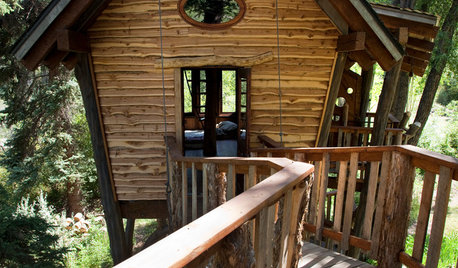
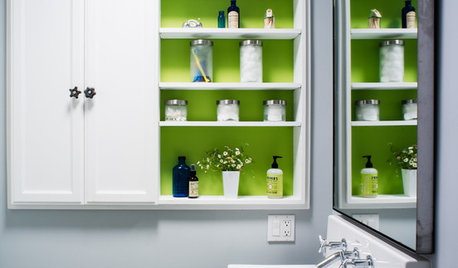
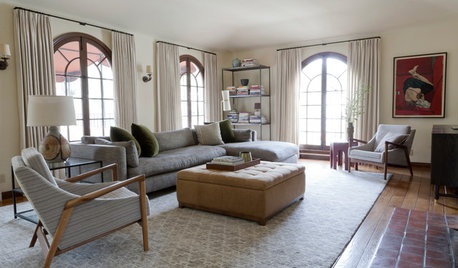
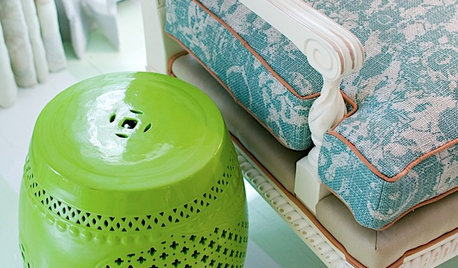
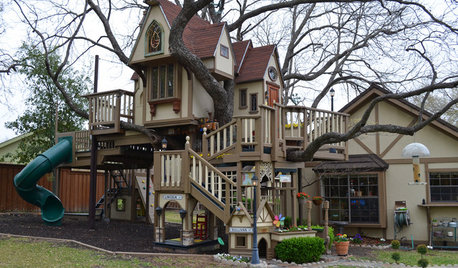
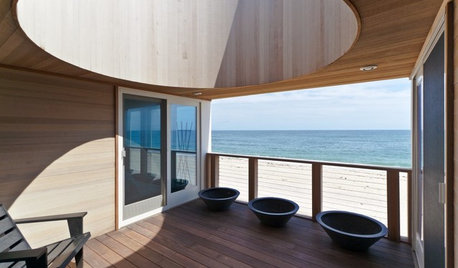

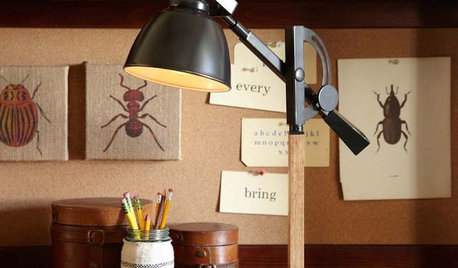






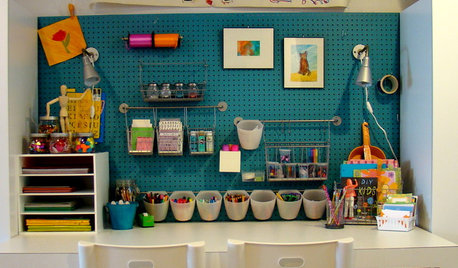
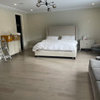
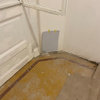
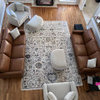
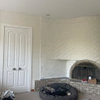
bronwynsmom